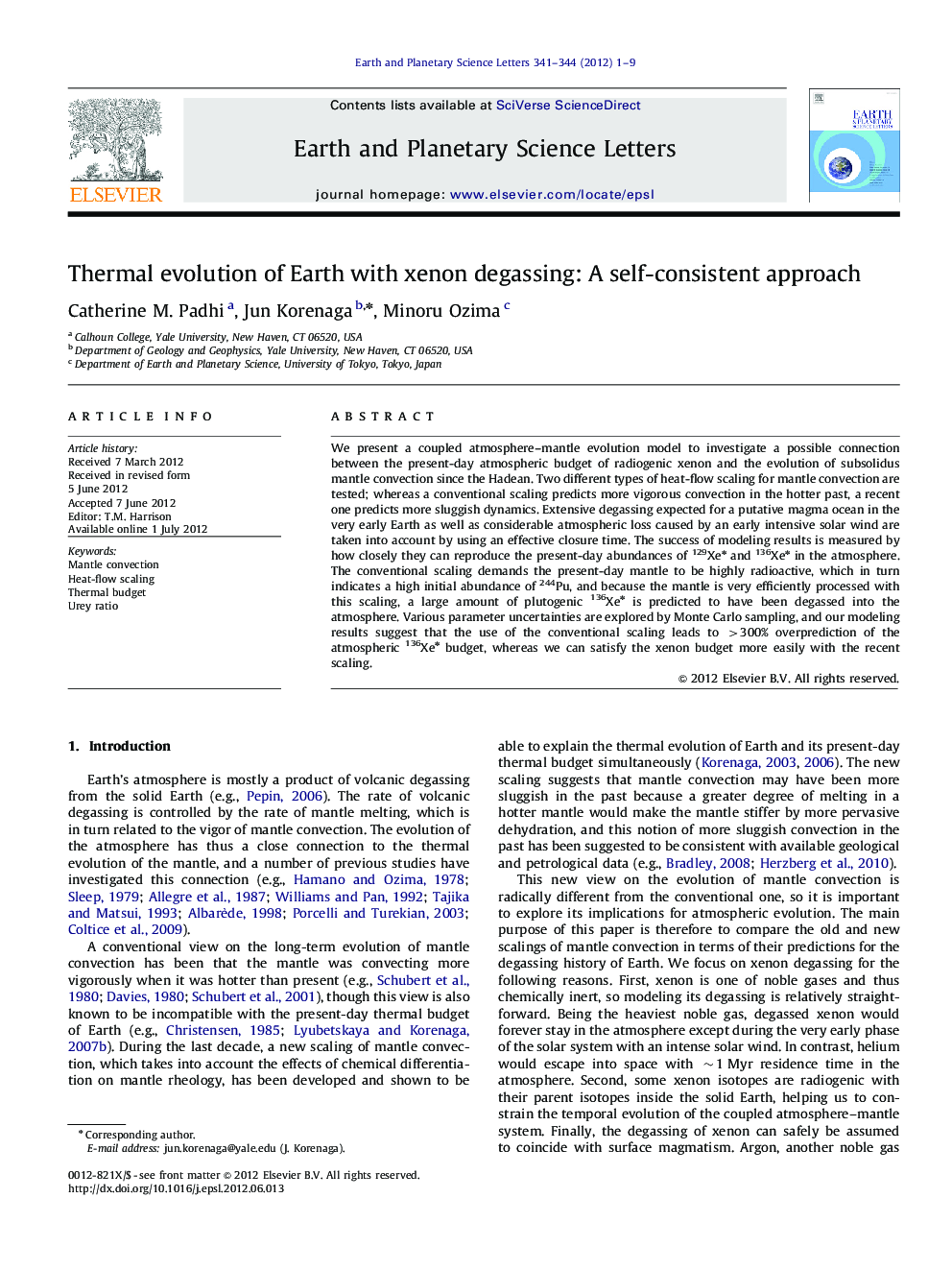| Article ID | Journal | Published Year | Pages | File Type |
|---|---|---|---|---|
| 6430515 | Earth and Planetary Science Letters | 2012 | 9 Pages |
We present a coupled atmosphere-mantle evolution model to investigate a possible connection between the present-day atmospheric budget of radiogenic xenon and the evolution of subsolidus mantle convection since the Hadean. Two different types of heat-flow scaling for mantle convection are tested; whereas a conventional scaling predicts more vigorous convection in the hotter past, a recent one predicts more sluggish dynamics. Extensive degassing expected for a putative magma ocean in the very early Earth as well as considerable atmospheric loss caused by an early intensive solar wind are taken into account by using an effective closure time. The success of modeling results is measured by how closely they can reproduce the present-day abundances of 129Xeâ and 136Xeâ in the atmosphere. The conventional scaling demands the present-day mantle to be highly radioactive, which in turn indicates a high initial abundance of 244Pu, and because the mantle is very efficiently processed with this scaling, a large amount of plutogenic 136Xeâ is predicted to have been degassed into the atmosphere. Various parameter uncertainties are explored by Monte Carlo sampling, and our modeling results suggest that the use of the conventional scaling leads to >300% overprediction of the atmospheric 136Xeâ budget, whereas we can satisfy the xenon budget more easily with the recent scaling.
⺠The classical heat-flow scaling of mantle convection requires high initial U and Pu budget. ⺠The classical scaling also indicates very efficient degassing in the early Earth. ⺠The classical scaling thus overpredicts the atmospheric budget of radiogenic xenon.
